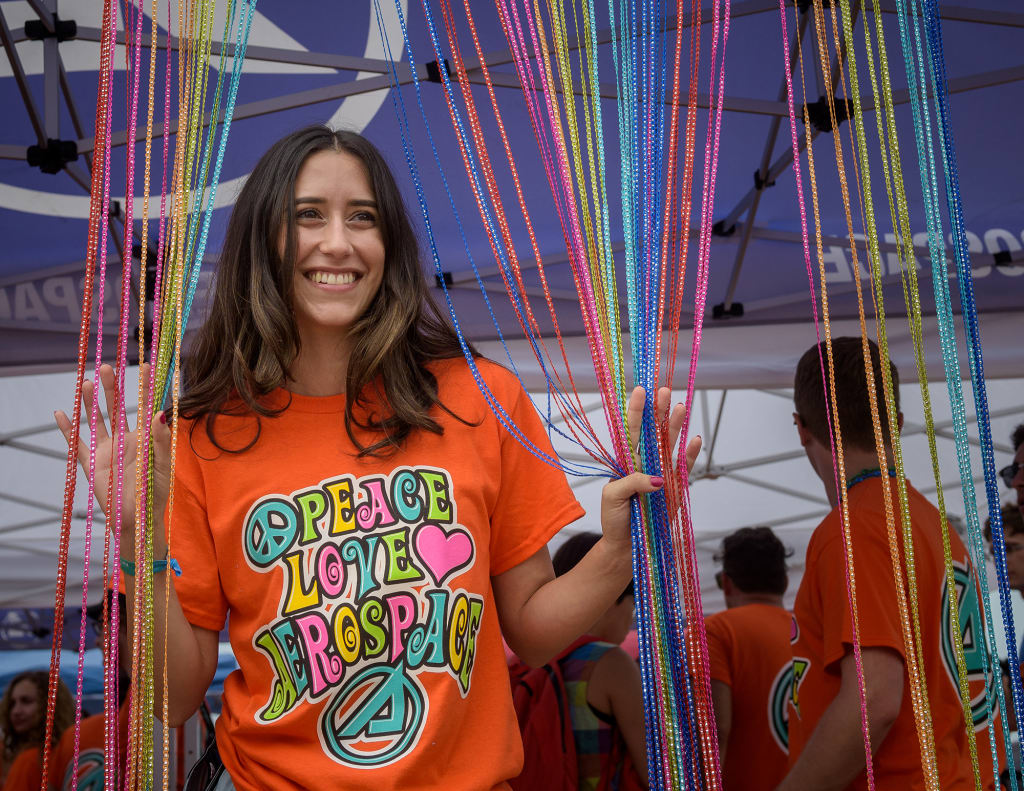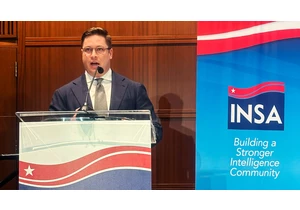Space was the farthest thing from Jocelyn Gonzalez’s mind when she enrolled at California State University, Long Beach. A Mexican-American, Gonzalez grew up speaking Spanish and was the first in her family to pursue an engineering degree. Although she’d fallen in love with computer programming, her career options seemed limited to industries she deemed “notorious for poor work-life balances.”
It wasn’t until Aerospace Corp. CEO Steve Isakowitz spoke to engineering students there about the future of space. Aerospace is a nonprofit conducting R&D for the military, NASA, and commercial space industry. Inspired and intrigued, Gonzalez landed an internship there that exposed her to a wide variety of jobs and technologies in the sector, while offering mentorship and diversity support. The company was, in turn, taken by her dedication and talent. After graduating in December, Gonzalez joined its Datacentric Platforms and Architectures division.
“The industry had seemed unattainable before—I had to be an astronaut with three PhDs,” she says. “But the support I received and the exposure to a wide variety of mentors helped make it my reality—and I am now a full-time employee at Aerospace.”
Gonzales’ entrée to space came through Space Workforce 2030, a two-year-old Aerospace initiative designed to improve representation in the space industry’s technical workforce and meet the needs of its rapid expansion. Diversity of cultures, skills, and genders brings a cross-pollination of ideas that boost innovation, financial returns, and better leadership. It also sends a message that space is for everyone.
“We are a showcase for what humanity is capable of doing in so many positive ways and we’re an expanding industry,” says Isakowitz, who founded the program. “If we’re going to get to that next level, we need to reach out to those who are underrepresented in the workforce—particularly women and people of color. Instead of us competing for the same small pool of talent out there, we need to expand the pool.”

Partnering with Space Foundation
Since its April 2022 launch, SWF2030 has enlisted 29 space firms and reached out to more than five million students via individual STEM programs, a Girl Scouts partnership, and a National Space Day YouTube broadcast on May 3. It also created a National Space Intern Program for university students that drew 332 participants from 1569 applications in its first year. “The intent is the interns at all of our companies get to know each other, go back to their campuses wearing their NSI Space Workforce swag, and create a buzz about this industry,” says Isakowitz.” This year, more than 4,200 students applied for an as-yet undetermined number of slots.
With interest ramping up so quickly, SWF2030 this year partnered with the Space Foundation, a space education nonprofit helmed by Heather Pringle, a retired Air Force Research Laboratory commander. It also hired an executive director, Melanie Stricklan, to ramp up its outreach, promote inclusive hiring, and increase programs to inspire and shepherd aspiring STEM students from kindergarten through graduate school.
“I loved space as a kid. I was eight years old looking up at the night sky in the middle of nowhere, West Texas, where there were not a whole lot of opportunities,” says Stricklan, the co-founder and former CEO of Slingshot Aerospace. “So how can we reach more kids like that? How can we reach those who haven’t understood their place in space and the many opportunities for them?”
Their first teamed effort celebrates National Space Day with a 45-minute livestream for fourth and fifth graders in more than 7,000 classrooms. It will feature space industry leaders presenting such topics as how rockets launch, why we grow plants in space, why the U.S. is going to Mars, and how space technology shapes our everyday lives on Earth, and remain on YouTube for future viewing. In addition, more than 300 local 4th- and 5th-graders will attend viewing parties hosted by SWF2030 member companies in California, Washington state, and the DC area. Students will be able to watch the broadcast, participate in STEM activities and campus tours, and engage with each other via a live video call.
Guidance at every stage
SWF2030 organizes around three sectors: Inspire, focusing on K through 12; Prepare, targeting higher education; and Employ, ensuring new employees belong, remain, and thrive at their companies. Participating companies craft their own STEM outreach programs for K through 12, such as STEM enrichment programs and lesson plans, streamed videos, and speakers from company researchers. For university students, SWF2030 created the National Space Intern Program to provide job experience with partner companies and help them understand where they fit in the overall ecosystem.
The Space Foundation’s 2024 Annual Report noted a 4.8% growth in the domestic private space workforce last year, with 41 launches taking place before March 2024, and moon landings reaching their highest frequency since the 1970s. SWF2030 has already had a positive impact, most notably with women and people of color in technical positions at participating companies rising from 32.7% to 34.1% in 2023. The number of POC interns hired by their companies grew from 42.7% to 46.4%.
A promising start, but they have their work cut out for them. The U.S. is the main driver of a global space industry that analysts project will grow roughly 7% a year to $775 billion in 2035 and a trillion in 2040, depending on its reach into consumer markets.
“If you looked at the numbers over the last decades, we didn’t see that much of a change in our workforce, despite a lot of rhetoric about the aspirations to do so,” says Isakowitz. “One of the reasons why we call this the Space Workforce 2030 is we knew that we couldn’t fix a problem in one or two years. This was going to take many years to make a difference.”
SWF2030 is part of a larger effort across the space industry to meet this growing demand by increasing access and inclusivity. They include NASA’s Science Mission Directorate Bridge Program, internships, and citizen science volunteer programs; Jet Propulsion Laboratory internships; the National Space Council’s Interagency Roadmap to Support Space-Related STEM Education and Workforce; and the newly launched Space4All from the U.S. Department of Education and four space non-profits, including Space Foundation. Individual companies, like Intuitive Machines, have even established scholarships and internships on their own. Meanwhile, museums and science centers run large-scale events, like the COSI Science Festival, to introduce youngsters to STEAM.
Secret sauce for success
However, SWF2030 believes its success stems from two novel elements. The first is involving senior executive volunteers to ensure a greater corporate commitment. The second is having the companies share traditionally private workforce data, such as recruitment, representation, and retention procedures. That pooling more quickly highlights the most effective strategies and presents hard-to-find statistics unique to the narrow niche of space industry diversity. The aggregated data is then shared publicly.
“This cross-company sharing has not ever happened before, especially with the competitive nature of the companies within our ecosystem,” says Stricklan. “So, it really opened up communication channels and best practice exchanges that didn’t exist before Space Workforce 2030.”
The approach has even caught the attention of unrelated arenas. “We’ve had other industries approach us about how we’ve modeled this to see if they want to undertake similar things,” says Isakowitz.
While these early successes are building momentum, SWF2030 team members are pacing themselves for the long road to developing the next generation of space leaders. “Bridging the education to employment talent gap that our industry is seeing now will only exponentially increase if we don’t act now,” says Stricklan. “We’re on a marathon, not a sprint.”
Zaloguj się, aby dodać komentarz
Inne posty w tej grupie

Long before generative AI’s boom, a Silicon Valley firm contracted to collect and a

The VR music platform Soundscape is collaborating with the electronic music producer deadmau5 to offer unlimited streams of his VR performance in


When ChatGPT emerged a year and half ago, many professors immediately worried that their students would use it as a substitute for doing t

Nvidia gave yet another triumphant quarterly report on Wednesday evening, and also gave the clearest si

Social media platforms and content apps change all the time. But in the past few years, TikTok has changed more than many.
As the company has faced criticism from regulators around the w

With democracy on the line yet again in November, millions of progressive voters will do what they’ve been conditioned to do: They’ll open their digital wallets to try to save it.
A prac
